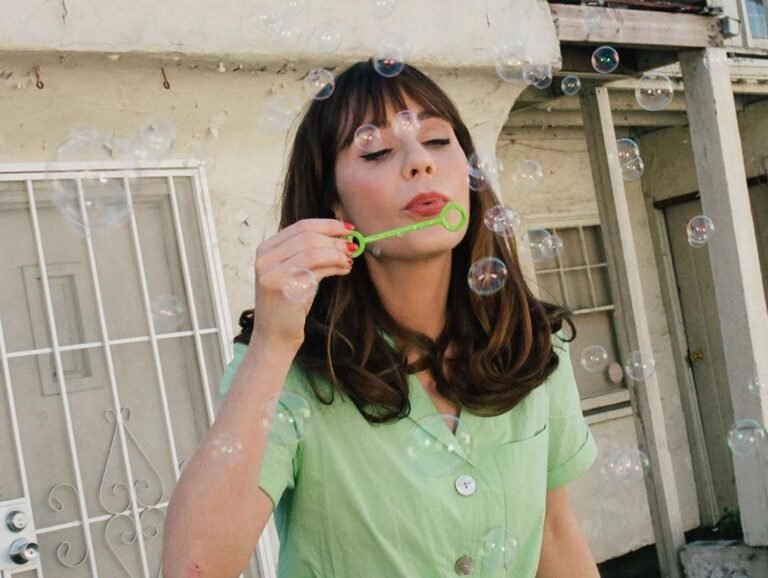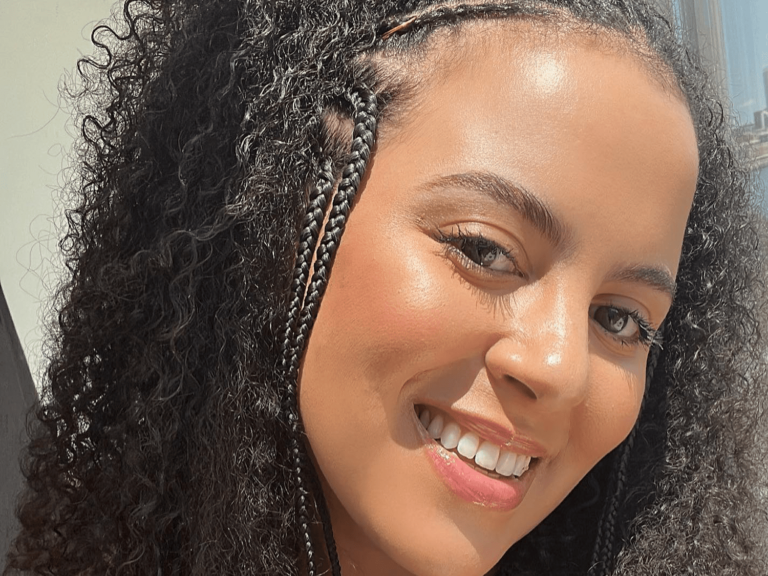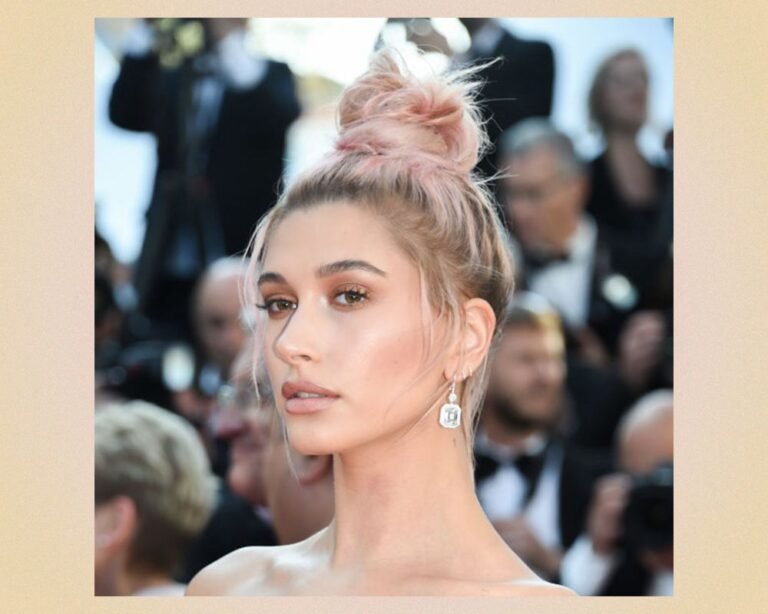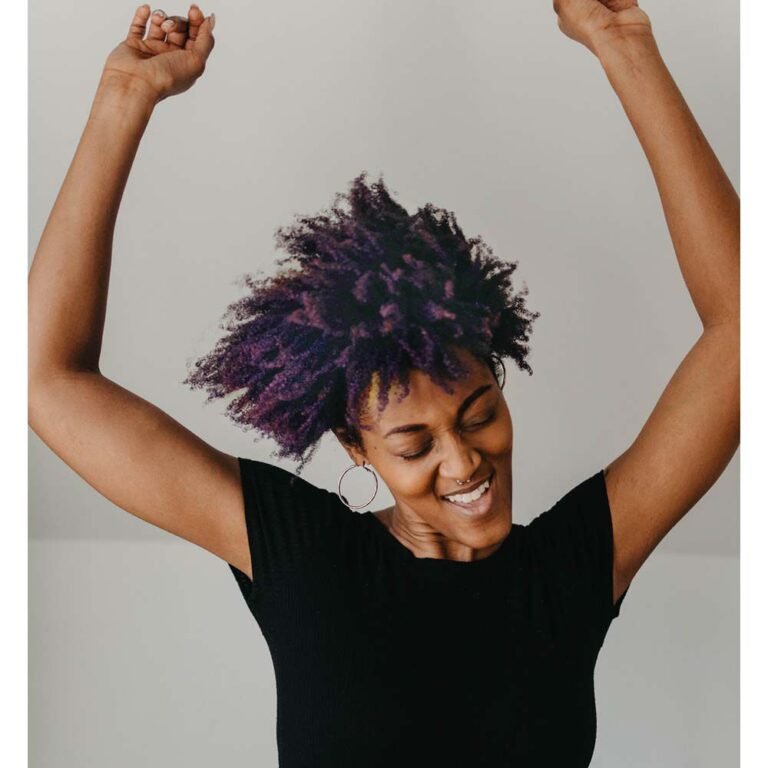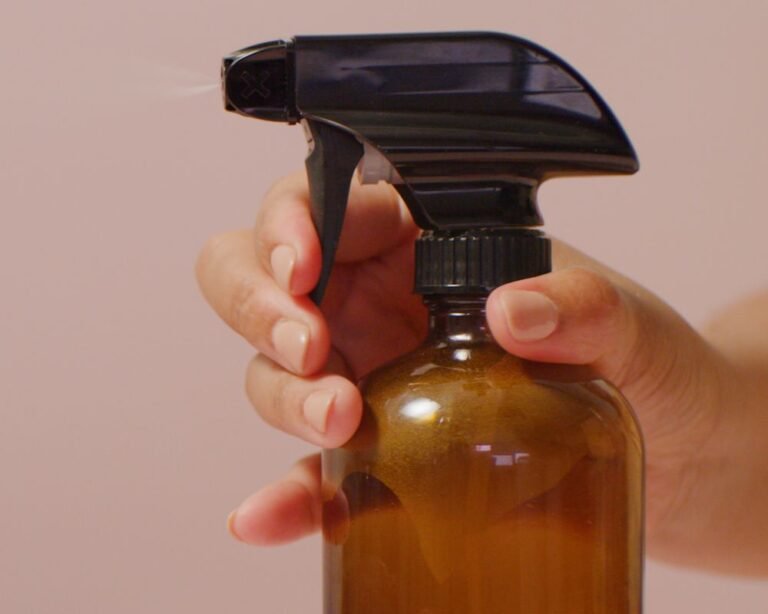Is Hair Rebonding Safe? Debunking the Myths
Hair rebonding involves breaking and rearranging hair bonds with strong chemicals, leading to potential hair damage. Although effective in achieving straight hair, the process may result in hair loss and scalp irritation.
It’s essential to consult with a stylist, especially if you have sensitive skin, before opting for this treatment to minimize potential risks and ensure hair health. Hair rebonding is a popular in-salon chemical treatment that gives hair a straight texture by restructuring disulfide bonds.
While the procedure provides long-lasting results, the use of potent chemicals can lead to hair breakage and scalp irritation. Before undergoing hair rebonding, it’s crucial to weigh the benefits against the potential risks to make an informed decision for your hair’s health and overall well-being.
Unveiling The Truth About Hair Rebonding
Hair rebonding raises concerns about hair safety due to harsh chemicals used. Breakage and scalp irritation are risks associated with the process. While keratin treatments are deemed safer for permanent straightening, proper consultation is advised for those with sensitive skin.
Exploring The Safety Of Hair Rebonding
Hair rebonding involves breaking and restructuring the natural bonds in the hair to achieve a permanently straightened look.
The chemical process used in hair rebonding can be damaging to the hair structure and may cause hair loss if not executed carefully.
It is crucial to consult with a professional stylist experienced in hair rebonding to minimize the risks associated with the treatment.
Debunking Misconceptions Surrounding Hair Rebonding
- Myth: Hair rebonding is completely safe for all hair types.
- Fact: Hair rebonding can result in hair damage and breakage, especially for fragile or chemically treated hair.
- Myth: Hair rebonding is a gentle process with no side effects.
- Fact: Chemicals used in hair rebonding can cause scalp irritation and may lead to allergic reactions in some individuals.
- Myth: Hair rebonding is a quick and easy fix for straight hair.
- Fact: The aftercare for rebonded hair is crucial to maintain its health and prevent further damage.
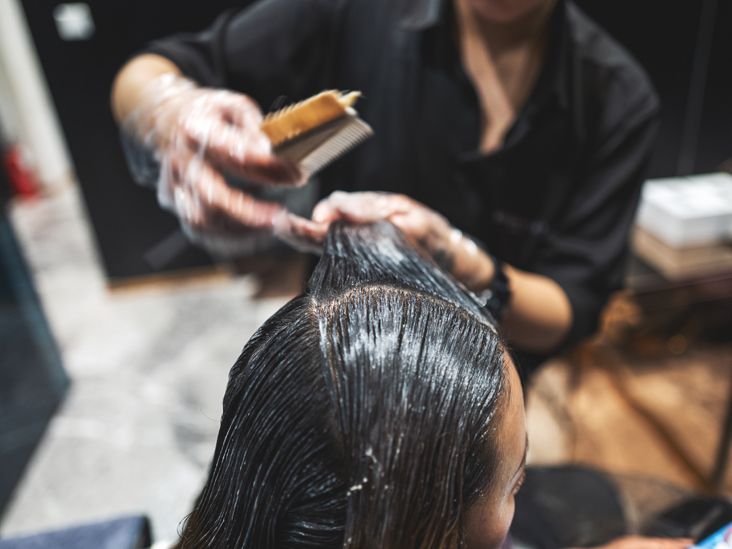
Credit: www.healthline.com
Understanding Hair Rebonding Process
Chemical Bonds At Play
Hair rebonding is an in-salon chemical treatment that involves breaking the disulfide bonds present in the hair shaft. These bonds are responsible for the natural structure of the hair, giving it its shape and texture. By breaking these bonds, the hair can be reshaped and arranged in a straight pattern.
The disulfide bonds are strong and provide the hair with its strength and elasticity. However, when subjected to constant heat styling, harsh chemicals, or excessive brushing, these bonds can become weak and damaged. This can result in frizzy, unruly hair that is difficult to manage.
Mechanism Of Rearranging Hair Bonds
Once the disulfide bonds are broken, the hair is then rearranged and bonded back together permanently using extremely strong chemicals. This process is what gives the hair its straight texture. The chemicals used in the rebonding process penetrate the hair shaft and change its internal structure, aligning the hair fibers in a straight pattern.
After the hair has been straightened, a neutralizer is applied to lock the new bonds in place and stabilize the hair’s structure. This step is crucial to ensure that the hair remains straight and smooth for an extended period.
It is important to note that the hair rebonding process should always be performed by a professional stylist who has experience and knowledge of the chemicals and techniques involved. Improper application or using subpar products can lead to potential damage, including hair breakage and scalp irritation. If you have sensitive skin or any existing hair concerns, it is advisable to consult with your stylist before proceeding with the procedure.
Comparing Hair Smoothening And Rebonding
When it comes to achieving sleek and straight hair, there are two popular options: hair smoothening and hair rebonding. Both treatments aim to give you smooth, manageable locks, but the techniques and results differ. Let’s take a closer look at the effects on hair texture and the longevity of results for each treatment.
Effects On Hair Texture
Hair smoothening is a treatment that reduces frizz and tames unruly hair. This process involves using mild chemicals to relax the hair and make it more manageable. Although it can improve the texture of your hair, it does not provide a completely straightened look. Smoothening primarily focuses on reducing frizz and enhancing shine, making it a great option for those who want to maintain some natural movement in their hair.
On the other hand, hair rebonding is a more intensive treatment that focuses on completely straightening the hair. During the rebonding process, strong chemicals are used to break down the hair’s natural bonds, rearrange them, and then bond them back together in a straightened position. This results in a sleek, poker-straight look. Rebonding is an ideal choice for individuals with curly or wavy hair who desire a permanently straightened style.
Longevity Of Results
When it comes to the longevity of results, hair rebonding tends to last longer than hair smoothening. Rebonding permanently alters the structure of the hair, making the straightening effect last for a significantly longer time. Depending on your hair’s growth rate, the results of rebonding can last anywhere from six months to a year. However, it is important to note that as new hair grows, the treated hair will eventually revert back to its natural texture, requiring touch-ups or re-treatments to maintain the straightened look.
In contrast, hair smoothening has a shorter lifespan. The effects of smoothening typically last for about three to six months, depending on how well you take care of your hair and the products you use. As the treatment is milder and does not permanently alter the hair’s structure, the natural texture of your hair will gradually return over time.
In conclusion, both hair smoothening and rebonding have their own benefits and considerations. If you are looking for a temporary solution to tame frizz and add shine, hair smoothening might be the right choice for you. On the other hand, if you desire a sleek, permanently straightened hairstyle, hair rebonding could be the ideal option. Consider your hair type, maintenance preferences, and desired results when deciding which treatment is best for you.

Credit: www.instagram.com
The Aftermath Of Hair Rebonding
After undergoing the hair rebonding treatment, many people wonder what happens next. Will their hair revert to its natural state? How should they take care of their hair post-rebonding? In this section, we will discuss the aftermath of hair rebonding and provide some helpful tips for maintaining healthy and beautiful hair.
Reverting To Natural Hair
Rebonded hair is typically straight and glossy, but over time, it may start to revert back to its natural state. This can be caused by various factors such as new hair growth, exposure to humidity, or improper maintenance. If you wish to go back to your natural hair texture, there are a few options you can consider:
- Grow out your rebonded hair: This option requires patience as you allow your hair to grow out. As the new hair growth appears, you can gradually trim off the rebonded ends until you are left with your natural hair.
- Haircut: If you prefer a shorter hairstyle, you can opt for a haircut to remove the rebonded hair and embrace your natural hair.
- Texturizing treatment: Another option is to undergo a texturizing treatment at a salon. This process can help to soften the rebonded hair and give it a more natural texture.
Hair Care Post-rebonding
Proper hair care is crucial after undergoing hair rebonding to maintain its health and longevity. Here are some essential tips to follow:
- Gentle shampooing: Use a sulfate-free shampoo and conditioner specially formulated for chemically treated hair. Avoid excessive rubbing or massaging of the scalp as it can lead to hair breakage.
- Hydration: Keep your hair moisturized by using a leave-in conditioner or hair serum. This will help to prevent dryness and frizz.
- Heat protection: Before using any heat styling tools, apply a heat protectant spray to shield your hair from damage. Use a low heat setting to avoid excessive heat exposure.
- Regular trims: Schedule regular trims every 6 to 8 weeks to get rid of split ends and maintain the health of your hair.
- Avoid harsh chemicals: Refrain from using harsh hair treatments such as perming or coloring immediately after rebonding, as it can weaken and damage the hair.
By following these hair care tips, you can ensure that your rebonded hair stays healthy and beautiful for an extended period.
Assessing The Benefits And Risks
Hair rebonding has gained popularity as a solution for achieving sleek, straight hair. However, as with any cosmetic procedure, it’s crucial to consider both the advantages and potential risks before opting for this treatment.
Advantages Of Hair Rebonding
- Results in straight and manageable hair
- Reduces frizz and enhances overall appearance
- Long-lasting effects compared to other treatments
- Offers convenience in styling and maintenance
Potential Side Effects And Risks
- Chemical treatments may lead to hair damage
- Risk of hair breakage due to the rebonding process
- Possible scalp irritation from the chemicals used
- Sensitivity concerns for individuals with delicate skin
In conclusion, while hair rebonding can provide desired results, it’s essential for individuals to weigh the benefits against the potential risks and consider seeking professional advice before undergoing the procedure.
:max_bytes(150000):strip_icc()/Japanese_StraighteningV2-4ce95d3d495b49b1bd70f88ff07edbaa.png)
Credit: www.byrdie.com
Safe Alternatives To Hair Rebonding
Explore safe alternatives to hair rebonding such as keratin treatments, which offer a less damaging way to achieve straight hair without harsh chemicals. Consider smoothening treatments that reduce frizz without permanently altering the hair’s structure, providing a safer option for hair care.
Keratin Treatments
Keratin treatments are a safe alternative that offers permanent straightening.
Qiqi Treatment For Permanent Straightening
Qiqi Treatment is another alternative for those seeking permanent straightening in a safe way.
Optimal Hair Straightening Options
Hair rebonding, a chemical straightening treatment, raises concerns about hair safety. The process involves the breakage and restructuring of disulfide bonds using potent chemicals, potentially leading to hair loss and damage. Opt for a safer alternative, such as keratin treatment, to achieve straighter hair without the harmful effects of chemicals.
Japanese Thermal Straightening
Japanese Thermal Straightening, also known as thermal reconditioning, is a popular hair straightening treatment that originated in Japan. This technique uses a combination of heat and chemicals to permanently straighten the hair. Unlike traditional hair rebonding, which breaks and rearranges the protein bonds in the hair, Japanese Thermal Straightening alters the internal structure of the hair, creating a sleek, straight look. During the Japanese Thermal Straightening process, a heat-activated cream is applied to the hair to break the bonds of the hair shaft. This allows the hair to be reshaped into a straight form. The hair is then flat ironed at a precise temperature to set the new shape. Finally, a neutralizer is applied to lock in the straightened structure. The end result is smooth, shiny, and pin-straight hair that lasts for months. While Japanese Thermal Straightening can give you the straight hair of your dreams, it’s important to note that this treatment is not without risks. The heat and chemicals involved in the process can cause damage to the hair, especially if not performed by a skilled professional. It is crucial to consult with a trusted salon and stylist who has experience in Japanese Thermal Straightening to minimize the potential for damage.Is Keratin Treatment Post-rebonding Recommended?
Keratin treatment, also known as Brazilian Blowout or Brazilian Keratin Treatment, is a popular smoothing treatment that can be done after hair rebonding. This treatment involves the use of a keratin-based formula to coat and fill in the gaps in the hair shaft, resulting in smoother, more manageable hair. Many people opt for a keratin treatment after hair rebonding to further enhance the straightening effect and to add shine and manageability to their hair. The keratin treatment can help seal the cuticle of the hair, reducing frizz and making the hair appear healthier and shinier. However, it is important to note that the decision to undergo a keratin treatment after hair rebonding should be made carefully. The additional chemicals and heat involved in the process can put extra stress on the hair, increasing the risk of damage. It is recommended to wait at least two weeks after hair rebonding before getting a keratin treatment to allow the hair to recover from the rebonding process. Before deciding to go for a keratin treatment post-rebonding, consult with a professional stylist who can assess the condition of your hair and determine if it is suitable for the treatment. They can provide personalized advice and recommendations based on the unique needs of your hair. In conclusion, when it comes to optimal hair straightening options, Japanese Thermal Straightening is a popular choice for those who desire long-lasting straight hair. However, it is essential to be aware of the potential risks involved and to seek the expertise of a skilled stylist. Additionally, considering a keratin treatment after hair rebonding can further enhance the straightening effect, but it is important to wait for the hair to recover from the rebonding process before proceeding with the treatment. Ultimately, prioritizing the health and well-being of your hair should be the top priority in any hair straightening journey.Final Verdict On Hair Smoothening
Hair rebonding, a chemical treatment to achieve straight hair, can be harmful as it involves breaking and rearranging the hair’s bonds. It may result in hair loss and damage. Instead, smoothening treatment can reduce frizz, but if you want straight hair, rebonding is a better option.
Proceed with caution, as both treatments have their risks.
Balancing Desire For Smooth Hair With Hair Health
Many individuals desire smooth and manageable hair, yet it’s essential to weigh this desire against the potential impact on hair health. Hair rebonding, often sought for its long-lasting straightening effects, involves breaking and rearranging the hair’s chemical bonds using strong chemicals, leading to concerns about hair loss and damage. It’s crucial to consider the trade-off between the desire for smooth hair and the potential risks to hair health before deciding on a smoothening treatment.
Consulting With Professionals For The Right Choice
Consulting with hair care professionals is paramount in making the right choice for a smoothening treatment. Professionals can provide personalized advice based on individual hair type and condition, guiding individuals in selecting the safest and most suitable hair smoothening treatment. Keratin treatments are often considered a safer option for permanent straightening. Consulting with a professional can help in deciding between hair smoothening and rebonding, ensuring that the health of the hair is prioritized in the decision-making process.
Frequently Asked Questions
Is Rebonding Harmful For Hair?
Hair rebonding involves breaking, rearranging, and permanently bonding the chemical bonds in your hair. It is one of the most harmful treatments as it can result in hair loss and damage.
What Is The Safest Hair Smoothing Treatment?
The safest hair smoothing treatment is a keratin treatment, as it does not rely on harsh chemicals like relaxers and permanent waves. It is considered to be the safest way to permanently straighten hair.
Is Smoothening Good Or Rebonding?
Rebonding is better than smoothening as it provides long-lasting straightening effects by rearranging hair bonds permanently.
Will My Hair Go Back To Normal After Rebond?
Hair may not return to its original state after rebonding due to the use of strong chemicals.
Conclusion
While hair rebonding may provide straight and smooth hair, it involves the use of harsh chemicals that can cause damage and hair loss. It is important to weigh the benefits against the potential risks before opting for this treatment. Consider consulting a professional to discuss safer alternatives.



